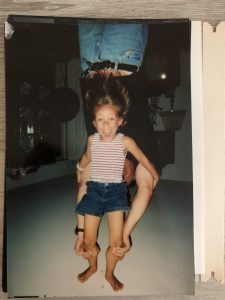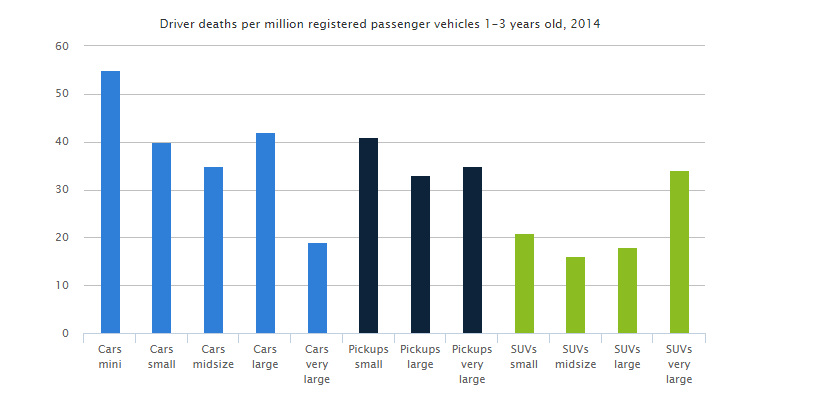ATA5:
Considering good deeds becoming a requirement lead me to the conclusion that not enough people are doing good deeds. Holding the door open for the person behind you, reaching for items on the top shelf for those that may not be able to reach, or helping the elderly put grocery bags or other heavy items in their trunk, are all “good deeds” that are simple to do yet, completely overlooked. We live in a society that is selfish and frankly, cruel toward each other. It’s honestly concerning that people are more readily rude than they are kind or helpful. It made me ask myself why good deeds are few and far between. I came to the realization that our society has grown increasingly more focused on our individual selves versus our collective communities.
For example, Covid-19 has been a global pandemic requiring the world to wear masks, social distance, and increase our hand hygiene. A large portion of Americans gripe and groan about having to wear a mask to keep themselves and others safe. Plenty of people have complained that the elderly get designated shopping hours so they can safely get their own supplies. Those same people have refused to make sure that the elderly and other families get their fair share of supplies as they checkout with a personal surplus. Good deeds are hard to come by because the focus of our society has turned away from the collective, turning toward the individual. The current pandemic reminded me of learning about pandemics in Epidemiology. Three years before Covid-19 came along my professor predicted that if the world were to experience a pandemic, society would not help recovery rates because of how selfish we are. She continued to explain that even when Ignaz Semmelweis warned his community about hand hygiene, no one listened to him hundreds of years ago either. Thinking of how individual-focused we are as a society, specifically our nation, it made me question how we’ve reached this level of selfishness.
Reflecting on my own good deeds, I felt a sense of pride and accomplishment that I was able to readily think of several good deeds I had completed over the course of a week. Being able to do acts of service, give gifts, or say words of encouragement are more ways to participate in good deeds that go completely overlooked. The simplest form of kindness can often be the gesture that means the most. I would happily continue to complete good deeds if it were to become a requirement. At this point, I believe a requirement of completing one good deed a day would benefit our society abundantly and make us a less selfish nation.
For my representative visual image I chose this picture of a young woman helping an older gentleman pick up fallen groceries. As I previously mentioned, helping pick up fallen or heavy objects, specifically for the elderly, is a good deed that is helpful and protective. By helping this man, who is clearly using the assistance of a cane to stand, this woman is helping him stay safe from injury by being the one to bend down and pick up the fallen items. Good deeds such as this show compassion, respect, helpfulness, and kindness.
ATA3:
Discussing whether one can state racial slurs without harboring racist views was incredibly thought provoking. For this assignment, I had to consider multiple factors such as the context of the situation in which a racial slur was said, the racial slur itself, as well as different influences on why the racial slur was even made.
I came to the conclusion that people can, and have, made racial slurs without harboring racist views. Morgan Wallen, for example, is a very popular up-and-coming country music artist. He recently called a friend of his the n-word while belligerently inebriated, stumbling up the stairs to his home. He issued a public apology, claiming to not hold any racial prejudices, only using the word while incredibly drunk as a term of endearment toward his buddy, as black people do with one another. The tone of his voice wasn’t filled with anger or hatred, converse to Michael Richards’ tirade toward a black heckler during one of his comedy acts. Richards’ words and behavior are more concretely exposing of his potential underlying racist prejudices.
In today’s society we have grown much more aware of the words and actions we show the world. More in tune with others’ feelings and much quicker to chastise others, our society doesn’t miss a chance to “cancel” people, businesses, or even books that express views that could even be considered racist. This is relevant to every individual because as individuals we make up our collective society that creates acceptable and unacceptable social norms. Unfortunately, such social norms work for certain demographics while simultaneously being out-of-bounds for others. I strongly disagree with the way Michael Richard handled himself, his emotions, his behavior and the words he deliberately chose to use. Morgan Wallen on the other hand, I can see how he made a colossal mistake through ignorance by using a racial slur while not actually holding racist views.
When contemplating intentions behind racial slurs in this assignment, I reflected on assignment 1. I remembered that the representative heuristic is commonly used as justification. Unfortunately, just because a person is any other skin color than white, they are assumed to be criminal, lower class, uneducated, and an overall threat. Black individuals that wear backwards hats, baggy jeans, and listen to loud rap music apparently fit a stereotype of being a “thug”, when in actuality, that said black person could be a very intelligible and harmless human being. Sadly, just because a bad person once came along that also looked similar, any other person fulfilling the stereotype is deemed a menace to society. I think it’s important to remember that one bad apple doesn’t spoil the cart, nor does one bad harvest spoil an entire lifetime of farming.

I chose this picture for my representative visual image because racial slurs, such as this, mindlessly get used but, some are deemed “ok” simply because of the amount of time they’ve existed or because the community they discriminate against doesn’t speak out. Ironically, a civilization of people that this country wanted to root out has been embraced through sports teams names while simultaneously getting no recognition for where these racial slurs stem from.
ATA2:
Reflecting on my self-perception and my self-projection enabled me to become more self-aware. Self-concept showed me how I see myself, while self-promotion showed me how I want others to see me. Of the six photos I selected as a reflective collective of “Vanessa”, I believe one photo in particular is summative of who I am and who I want others to see me as. The candid photo of my dad holding me by the ankles as I laugh hanging upside down has been an anchoring point for me during difficult times. I use this photo to reflect on, because I remember being so jovial and uninhibited. As a child I was always happy, always laughing, always seeking adventure. I was resilient and fearless. When facing hardships or making decisions that impact my well-being as an adult, I think about what would make me as happy as I was in that photo? Can I bounce back from fear or difficulty as I did when I was the six-year-old girl hanging from the ceiling?
In my Abnormal Psychology course, we recently learned about the increasing desire to prevent disorders and improve mental health. Specifically, Positive Psychology focuses on positive feelings and outlooks to help improve patients. By focusing on optimistic thoughts and feelings, such as those inferred from the photo I described, I can maintain a more positive attitude toward difficulties. I can use healthier coping mechanisms therefore limiting my stress levels and chances of becoming overwhelmed with negative emotions. This approach to handling stress and other difficulties has changed how I personally think about hardships. I find myself being more resourceful, more optimistic, more calm. Reframing my mindset has encouraged me to attack problems more confidently than I had in the past. Understanding how positivity can impact my approach, my decision-making process, and my outcomes greatly improved my mental state. I reflect proudly on the six-year-old Vanessa with the same happy and resilient spirit at twenty-four-years old.
For my representative visual image I chose the picture discussed in this post. As seen, I bear a delighted facial expression with enthusiastic adventurism that I have been able to incorporate into adult decision-making.

ATA1:
Learning about heuristics in assignment one allowed me to better understand the “how” and “why” behind my thought processes. Since heuristics are strategies the mind uses all the time, it is important to understand the effect they have on individual’s decision making. The ability to make unbiased and accurate judgements is especially important in psychological research and counseling, aspects of a future career I plan on pursuing.
Specifically, the availability heuristic struck a chord with me. I have noticed that although I try to maintain a healthy level of skepticism, I have fallen victim to the availability heuristic. With this strategy of thinking, I have incorrectly assumed facts about things or situations that are not necessarily true. The example discussed in the course’s textbook explained how SUVs are thought to be safer than smaller cars when in reality, the opposite is true. My fiancé and I are starting a family so we decided to shop around for a reliable family vehicle. Naturally we have been looking at SUVs believing they are safer due to their size. I believe this thought is just a way to rationalize wanting a larger vehicle that has more room for our future children, not necessarily safer. While car shopping, I was able to recognize the availability heuristic I was using which I would have never noticed prior to assignment one.
For my representative visual image I chose a bar graph illustrating data that supports the claim that larger, heavier vehicles are not necessarily safer than smaller vehicles.

